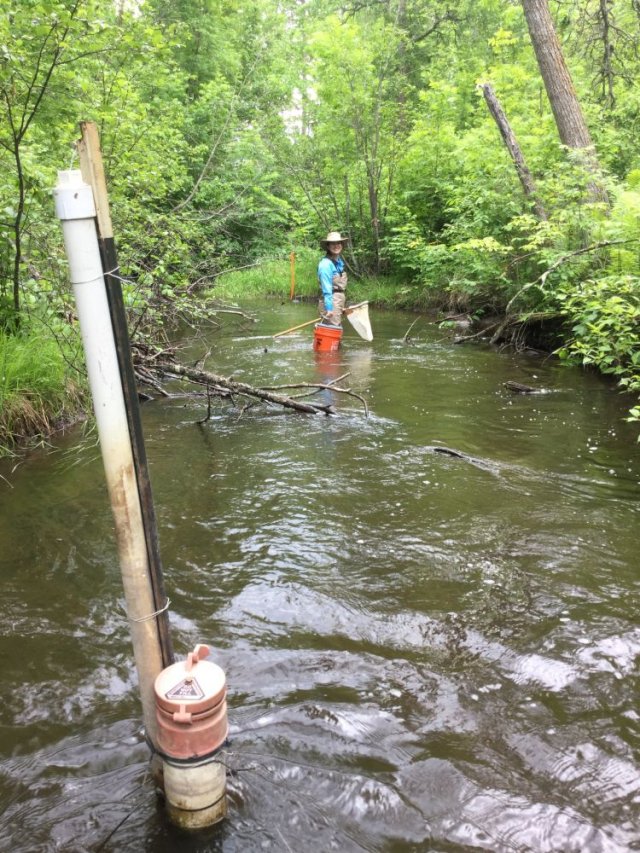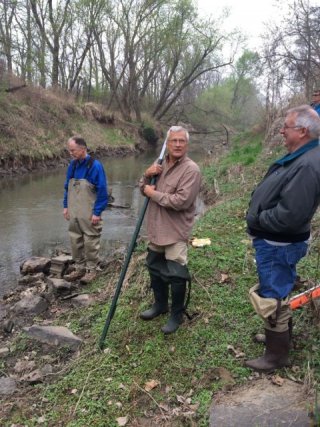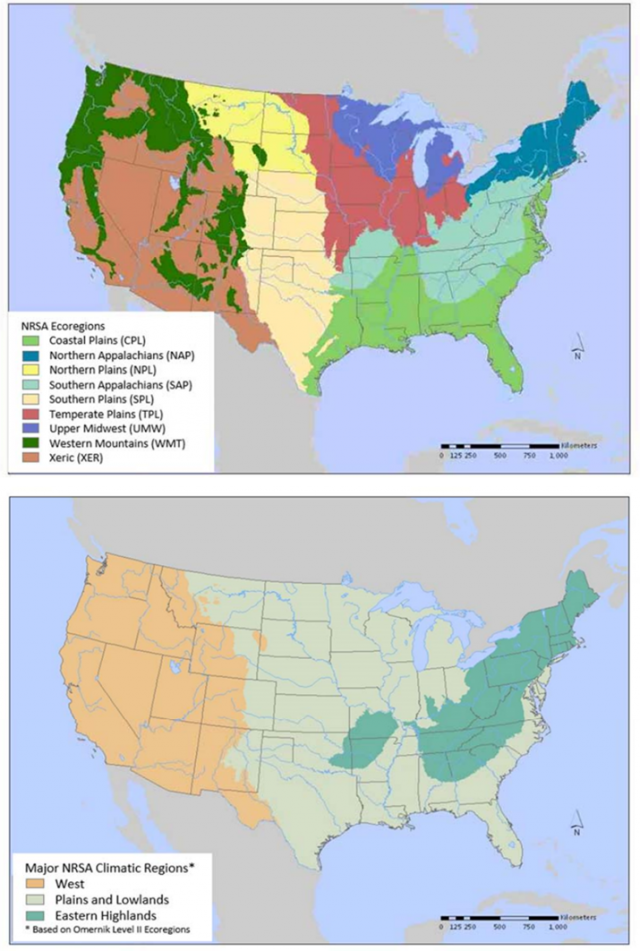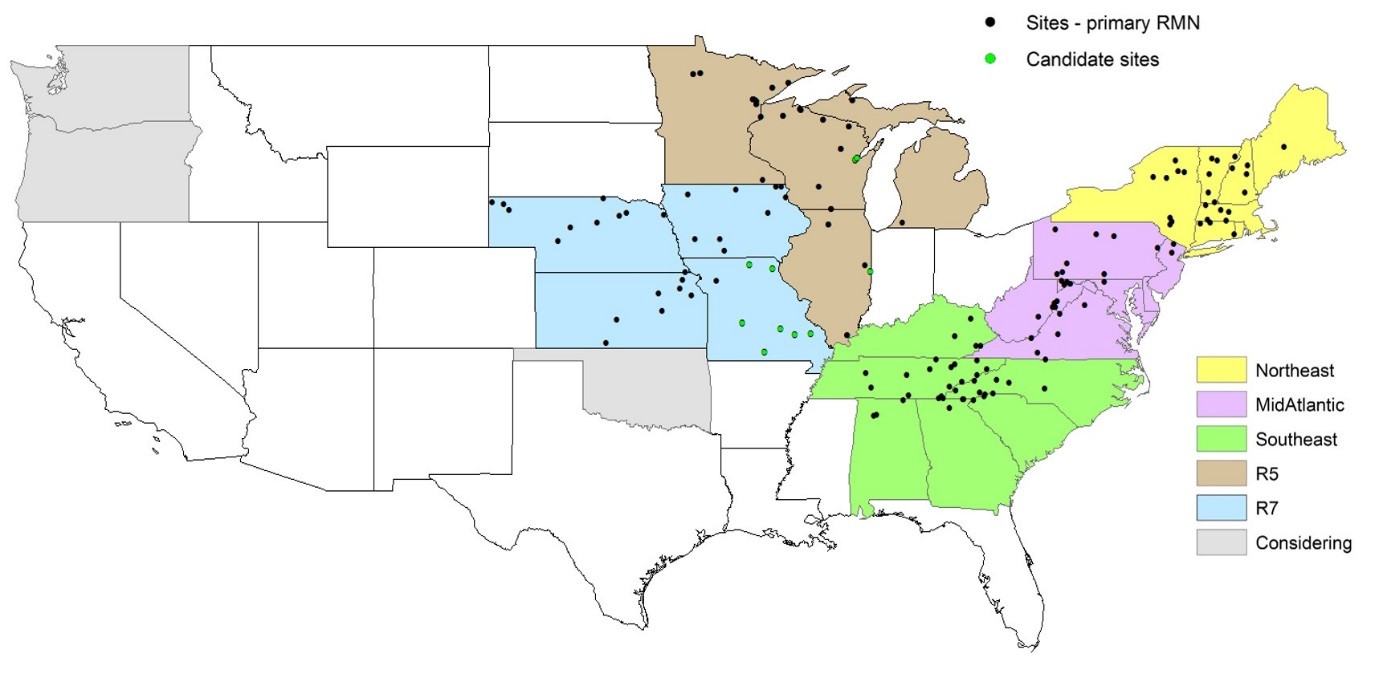Regional Monitoring Networks - Streams
Stream RMNs
RMNs exist in the Northeast, Mid-Atlantic, Southeast, and Midwest regions of the United States (Figure 1). Efforts are expanding into other regions. . RMN sites monitor water quality, stream flow parameters, and biological indicators of aquatic ecosystem health.

Stream protocols
Use of consistent and comparable methods at RMN sites is important, because different sampling protocols introduce biases in analyses and contribute to variability in results. Variation introduced by different sampling regimens increases the noise-to-signal ratio, requiring more samples over time to detect trends. We strive to achieve as much consistency within and across RMN regions as possible. For some indicators like stream macroinvertebrates, however, methods sometimes differ with habitat (e.g., silt versus gravel bottoms, riffles versus deeper reaches).
The RMN framework allows for different levels of effort to maximize participation. There are four levels of effort for each indicator, from 1 as the minimum level to 4 as the ‘highest’ level (Tables 1, 2, and 3). Participants are encouraged to collect as many of the indicators as possible at level 3 or above. That approach increases the likelihood of detecting trends over shorter time periods and increases the utility the data. If participants are unable to collect the full set of parameters, they can select the options that best fit their priorities. They can work towards participating at a higher level as resources permit. Phased approaches are common, where RMN partners add more parameters (and potentially sites) as they gain experience and build capacity.
| Component | 1 (lowest) | 2 | 3 | 4 (highest) |
|---|---|---|---|---|
| Sampling frequency | Site is sampled every 5 or more years | Site is sampled every 2−4 years | Site is sampled annually | Site is sampled more than once a year (e.g., spring and summer) |
| Habitat | No riffle habitat | Multihabitat composite from a sampling reach with scarce riffle habitat | Abundant riffle habitat | Multihabitat sample with taxa from each habitat kept separate |
| Time period | Time period varies from year to year, and adjustments are NOT made for temporal variability | Time period varies from year to year, but adjustments are made for temporal variability | Adherence to a single time period for sampling | Samples are collected during more than one time period (e.g., spring and late summer/early fall) |
| Fixed count subsample | Presence/absence or field estimated categorical abundance (e.g., rare, common, abundant, dominant) | Fixed count with a target of 100 or 200 organisms | Fixed count with a target of 300 organisms | Fixed count with a target of more than 300 organisms |
| Processing | Organisms are sorted, identified and counted in the field by trained individuals | Samples are processed in the laboratory by trained individuals. Some but not all methods for sample processing were accepted by the regional working group | Samples are processed in the laboratory by trained individuals and use methods that are agreed upon by the regional working group | Samples are processed in the laboratory by trained individuals and use methods that are more stringent than those being used by the regional working group |
| Sorting efficiency | No checks on sorting efficiency | Sorting efficiency checked internally by a trained individual | Sorting efficiency checked internally by a taxonomist | Sorting efficiency checked by an independent laboratory |
| Qualifications | Identifications are done by a novice or apprentice biologist with no certification | Identifications are done by an experienced taxonomist without certification | Identifications are done by a trained taxonomist who has an appropriate level of certification | Identifications are done by a certified taxonomist who is recognized as an expert in species-level taxonomy for one or more groups |
| Taxonomic resolution | Coarse resolution (e.g., order/family) | Mix of coarse and genus-level resolution (e.g., family-level Chironomidae, genus-level Ephemeroptera, Plecoptera, and Trichoptera [EPT]) | Mix of species and genus level. Identifications are done to the level of resolution specified in Appendix G | Species level for all taxa, where practical |
| Validation | No validation | Taxonomic checks are performed internally. The entire subsample (referred to as a “voucher sample”) is retained for each site. | Taxonomic checks are performed internally. The entire subsample (referred to as a “voucher sample”) is retained for each site as well as a reference collection with each unique taxon | Taxonomic checks are performed by an independent laboratory. The entire subsample (referred to as a “voucher sample”) is retained for each site, as well as a reference collection with each unique taxon verified by an outside expert |
Expectations for data collection and best practices are described in the Stream RMN report (USEPA 2016) and Best Practices for Continuous Monitoring of Temperature and Flow in Wadeable Streams (USEPA 2014).
Figure 1. Stream RMN regions
Stream site selection criteria
Sampling efforts at the RMNs are concentrated at a core group of sites called ‘primary’ sites, where as many of the recommended parameters as possible are collected using the RMN protocols (Figure 1). There are also ‘secondary’ sites in the RMNs at which data for a subset of parameters are collected as part of other independent monitoring efforts. Data from secondary sites increase the sample size and range of conditions represented in the RMN data set. They also can capture gradients of interest such as level of development (pristine to severely degraded).

Classification ensures that everyone has a clear understanding of what stream types are sampled. From an analytical standpoint, stream classification allows a network to identify stream reaches for which parameter values are expected to be similar. In the Northeast, the RMN classified streams into four types by macroinvertebrate data and stream size and slope. See Regional Monitoring Networks (RMNs) to Detect Changing Baselines in Freshwater Wadeable Streams (EPA/600/R-15/280), Appendix A. Since that time, EPA has analyzed benthic community composition in parts of all three eastern regions (Northeast, Mid-Atlantic, and Southeast) and found stream size and slope to be important predictors. Table 4 lists the main considerations for site selection.

Managing both discrete and continuous data collected from RMN sites is similar across the different types of RMNs and is described on a separate Data Management page. The Data Analysis page describes how RMN data are analyzed, summarized, and visualized to explore a variety of endpoints.

